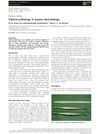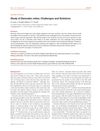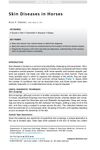Guinea Pigs
July 2017
TLDR Guinea pigs can lose hair due to infections or poor diet, and they may have ear infections or cataracts.
The document discussed various health conditions affecting guinea pigs, with a focus on alopecia, which could occur anywhere on their bodies. It highlighted the importance of using techniques like skin scrapings, biopsies, and culturing to identify infectious causes of alopecia. The document also emphasized evaluating housing and diet, particularly vitamin C intake, to address simple cases of alopecia. Additionally, it mentioned that neurological disorders were rare in guinea pigs, but symptoms like head tilt and circling could indicate bacterial ear infections. Cataracts were noted as common, and the document covered a wide range of other conditions, including bacterial, viral, and nutritional diseases, as well as various types of neoplasia and organ-specific conditions.





